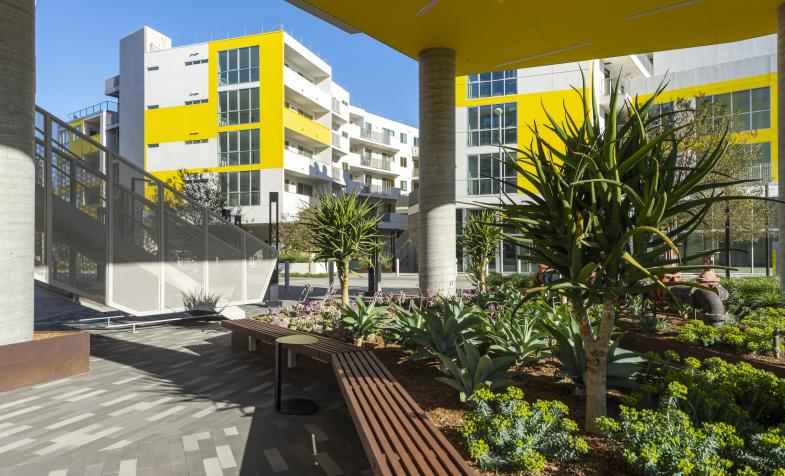Beyond Basic Amenities: Healthy Living as Design Driver
Beyond Basic Amenities: Healthy Living as Design Driver
In a malaise? There’s a good chance your living environment is partly to blame.
In an era where our homes have transformed into multi-purpose spaces—becoming also our offices, gyms, classrooms—have we truly considered the full impact of consolidated living on our wellbeing? Are we doing enough to prioritize the mental and physical health of residents?
The many facets of healthy living
Healthy living transcends physical health, encompassing a holistic approach to wellbeing, work-life balance, and mental health. For designers of living environments, this means integrating environmentally-focused strategies in numerous ways. For example:
- Focusing on indoor air quality improvements that reduce pollutants which contribute to asthma and other respiratory conditions
- Paying attention to daylighting and circadian rhythms to allow residents—especially those living with behavioral and mental health conditions— to achieve calm and restfulness throughout the day
- Selecting non-toxic materials to prevent and decrease frequency and longevity of illness
- Embedding amenities to alleviate the impact of environmental stressors related to remote work
Moreover, healthy living environments empower their residents by offering personal control. Beyond standard considerations like security and privacy, residents of a space should have agency to shape their environment and express themselves through things like flexible configurations and separate spaces tailored to specific tasks.

In truly healthy living environments, a sense of social interconnectedness is also part of the puzzle. Design should resonate with occupant cultures and identities in order to create meaningful connections. For example, Mino-bimaadiziwin Apartments, an affordable housing community in Minneapolis that also houses the Red Lake Nation’s embassy and healthcare clinic, is a convenient hub for residents to receive the services, resources, and care they need. It also serves a deeper purpose, providing a sense of community, place, and pride for Red Lake Ojibwe Band members and other local Native American residents to bond and share knowledge important to tribal culture.
Until recently, the development and design of most housing types has not considered healthy living, especially as it relates to mental wellness. What many renters seek in a living environment has shifted since the pandemic and the rise of “Work from Anywhere.” Thus, the industry-standard model of housing is incongruous with the elevated expectations of today's discerning consumers, who now seek long-term health and wellness benefits from their living spaces. Put simply, today’s savvy shoppers expect healthy living features to be prioritized and embedded in the design of their homes.
Healthy living by design
Cuningham believes it is imperative that the built environment promotes healthy living. To design homes that achieve this goal, Cuningham leverages the knowledge of external wellness experts and our own cross-disciplinary, integrated design expertise. Our designers build learning environments that foster movement and play, healthcare environments that prioritize caregiver mental wellbeing. We utilize the firm’s diverse perspectives to holistically consider programming, local economic opportunities for residents, and the ability to facilitate community togetherness.

For example, Cuningham’s design for the recently-completed Fieldhouse Dinkytown, an off-campus student living community in Minneapolis, features a wide variety of private and communal multi-use spaces to give residents a sense of personalization in how they work, sleep, study, exercise, and socialize with other residents. Pedestrian-focused enhancements at the street level combined with a variety of transit resources make the project an inclusive community hub that integrates micro-mobility into the surrounding commercial district. The design encourages users to form community connections, both inside and outside of the building.
Where to start?
Healthy living is becoming a fundamental aspect of multifamily residential development. By reframing design through the lens of “healthy living,” we can better understand strategies that best elevate residents’ quality of life.
At the end of the day, designing for healthy living is also a financial decision. Customers increasingly seek long-term health and wellness benefits in all aspects of life including their living space. By addressing those needs, it stands to reason that stabilization will occur quickly for developments that recognize healthy living benefits. Residents who feel great in their homes also stay longer—minimizing turnover, and strengthening new operating income potential.
How will you integrate healthy living into your next project?


